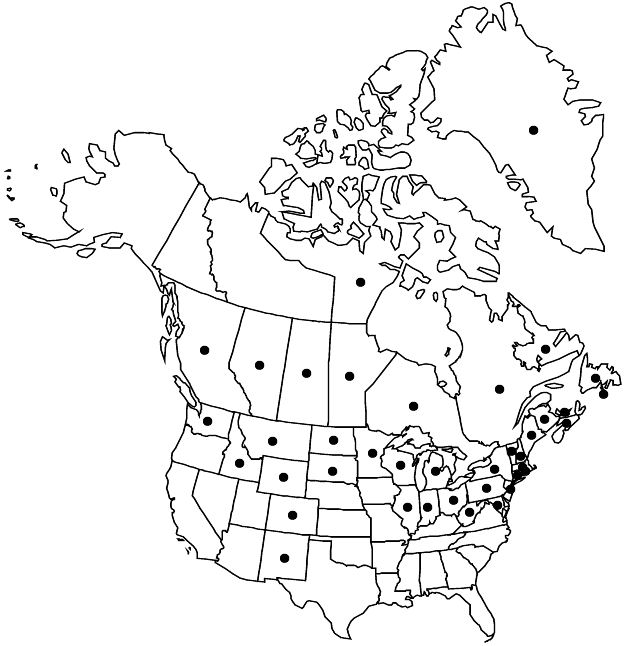Geum rivale
Sp. Pl. 1: 501. 1753.
Plants leafy-stemmed. Stems 30–85 cm, sparsely downy to scattered-hirsute proximally, downy distally. Leaves: basal 6–40 cm, blade interruptedly pinnate, major leaflets 5–7, mixed with 7–14 minor ones, terminal leaflet slightly larger than major laterals; cauline 2–10 cm, stipules ± free, 7–18 × 5–9 mm, blade pinnate to 3-foliolate. Inflorescences 2–8-flowered. Pedicels densely downy, some hairs glandular. Flowers nodding; epicalyx bractlets 2–4 mm; hypanthium greenish maroon to maroon; sepals erect, 7–10 mm; petals erect, yellow, suffused with purple and purple-veined, spatulate-obovate, 8–10 mm, ± equal to sepals, apex rounded, truncate, or shallowly emarginate. Fruiting tori on 4–10 mm stipes, densely bristly. Fruiting styles geniculate-jointed, proximal segment persistent, 5–9 mm, apex hooked, stipitate-glandular, bristles on basal 1/2, distal segment deciduous, 3–4.5 mm, pilose except apical 1 mm. 2n = 42.
Phenology: Flowering mid spring–summer.
Habitat: Swamps, fens, bogs, wet meadows, along streams and lakes, moist rich woods, in circumneutral to alkaline soil
Elevation: 0–3000 m
Distribution

Greenland, St. Pierre and Miquelon, Alta., B.C., Man., N.B., Nfld. and Labr., N.S., Nunavut, Ont., P.E.I., Que., Sask., Colo., Conn., Idaho, Ill., Ind., Maine, Md., Mass., Mich., Minn., Mont., N.H., N.J., N.Mex., N.Y., N.Dak., Ohio, Pa., R.I., S.Dak., Vt., Wash., W.Va., Wis., Wyo., Eurasia.
Discussion
Geum rivale forms hybrids with three other species of the genus in North America: G. ×aurantiacum Fries ex Scheutz [G. aleppicum × G. rivale] is reported from Alberta, Ontario, Montana, and New York; G. ×pervale B. Boivin [G. macrophyllum var. perincisum × G. rivale] is known from Alberta, Ontario, Quebec, and Saskatchewan; and G. ×pulchrum Fernald [G. macrophyllum var. macrophyllum × G. rivale] is reported from Ontario, Quebec, Idaho, New Hampshire, and Vermont. The hybrids generally have the habit and foliage of G. rivale but exhibit shallower hypanthia, spreading sepals, and pure yellow, clawed, obovate to suborbiculate petals. The glandular hairs on the pedicels usually lack the dark tips seen in G. rivale. Given that the morphologic differences among the three named hybrids are vague, suspected hybrid specimens are best determined while in the field where collectors can note the proximity of the hybrids to their supposed parental species.
Selected References
None.